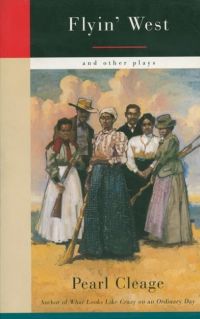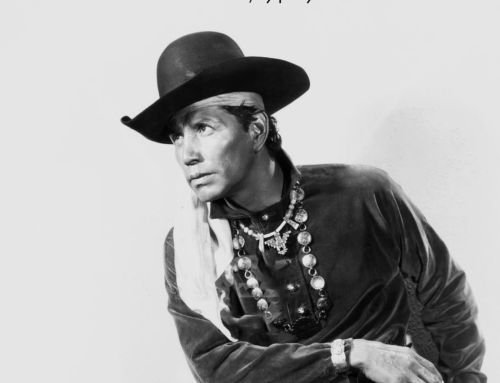For well over a century, through prose narrative, poetry, and drama, writers have interpreted what the American West has meant in the context of American ideals and democracy.
During the African American literary renaissance of the 1990s, Black women writers produced ground-breaking contributions, with a number of prominent authors who turned westward in particular. Writers such as Toni Morrison, J. California Cooper, Jewell Parker Rhodes, Pearl Cleage, Maxine Clair (and others) chose to focus their narrative energies on communities, histories, and lived experiences of African Americans in the post-emancipation American West. Using historical fiction and drama as a medium, these authors carried forth the Black literary tradition of reclaiming lost histories and giving voice to understudied architects of American democracy.
When it comes to visual representations of African Americans in the West, our collective memory conjures images often limited to Buffalo Soldiers, cowboys on horseback, or lawmen like Bass Reeves. But much of the West was also populated by Black families trying to make a new life free from the confines of enslavement.

Members of a Nicodemus family posed in front of their improved homestead. They have added a roofed patio to the front of the house and seem to have purchased an oxen. Library of Congress, Public Domain.
Today, scholars like Dr. Kalenda Eaton explore efforts to reclaim a Black western identity through the work of African American writers and how, in their literary works, the topography of the western region serves as a staging area for diverse narratives about migration, community, and freedom. In a recent lecture at the museum, Dr. Eaton explained how historical fiction has provided a way for Black authors to define a place within the American West on their own terms through the revelation of overlooked and forgotten histories of African American communities in the Western Plains region. Let’s explore some examples of how such writers have explored concepts of home, belonging, communalism through their intentional reimagining of Black life in the West.
Paradise (1998) by Toni Morrison
 Published in 1998, Paradise is a novel by Toni Morrison set primarily in Oklahoma in a fictional all-Black town. The story centers around families who had migrated from the southern US into Oklahoma Territory in the late 19th century to escape domestic terrorism and create a haven for their community. The novel follows the evolution of different generations within the community.
Published in 1998, Paradise is a novel by Toni Morrison set primarily in Oklahoma in a fictional all-Black town. The story centers around families who had migrated from the southern US into Oklahoma Territory in the late 19th century to escape domestic terrorism and create a haven for their community. The novel follows the evolution of different generations within the community.
Morrison’s writing considers what sovereignty might look like for Black people in these kinds of spaces. Throughout the novel are passages that allude to ideas of freedom—not just liberation from enslavement, but a different type of freedom. A freedom of self-determination, the ability to make oneself in this space, to take control of one’s destiny.
The author’s concept for the novel was influenced by an encounter she had with some documents related to Black homesteading in Oklahoma Territory. In the early 1970s, Morrison worked as an editor of The Black Book, an anthology of ephemera—a collection of articles, images, broadsides, etc.—that traced the story of the African American experience in the U.S. from slavery to the 1920s. While working on this project, Morrison came across an article entitled “Come Prepared or Not At All.” The article’s author warns future Black homesteaders considering moving West that the only person they can rely on is themselves. As Morrison was reading this it struck her that, in a time when people were being forced out of or running away from their home and seeking solace in these spaces in the Western U.S., there were people already there, sending warnings. It made her think about the possibility African Americans turning away other Black folks, and the determination of those folks to prove that they belong.
Citizen’s Creek: A Novel (2014) by Lalita Tademy
 Among contemporary literature that reclaims stories of Black voices in the American West is Lalita Tademy’s 2014 historical novel Citizen’s Creek. The book is based on the true story of Cow Tom, who was a Black Creek man born an enslaved person to the Muscogee (Mvskoke) tribe in 1810.[1] When the federal government forced the removal of Indigenous peoples from southeastern U.S. to Oklahoma Territory, Tom and his family survived the Trail of Tears. Later, Tom became an interpreter between the Mvskoke and the U.S. government and military. Upon his death in 1874, Tom bequeathed his property and assets, as well as his social standing, to his family. [2]
Among contemporary literature that reclaims stories of Black voices in the American West is Lalita Tademy’s 2014 historical novel Citizen’s Creek. The book is based on the true story of Cow Tom, who was a Black Creek man born an enslaved person to the Muscogee (Mvskoke) tribe in 1810.[1] When the federal government forced the removal of Indigenous peoples from southeastern U.S. to Oklahoma Territory, Tom and his family survived the Trail of Tears. Later, Tom became an interpreter between the Mvskoke and the U.S. government and military. Upon his death in 1874, Tom bequeathed his property and assets, as well as his social standing, to his family. [2]
Tademy’s novel takes readers deep into this little-known chapter of American history. She based her writings on the many oral history narratives of people who had been forcibly removed from their ancestral lands. Tademy was interested in exploring one’s need to return to that space, that feeling of home. The novel centers around the unique position this Black man held in two different cultures while serving as an intermediary between 19th century Indigenous tribes and the U.S. government. And the story is also a tale of community and family, in particular, the women in his life that made it possible for Cow Tom to live a successful life.
Flyin’ West (1999) by Pearl Cleage
 Written for the theatrical stage, Pearl Cleage’s 1999 play, Flyin’ West, centers around a group of African American women who are homesteading in Kansas in the late 19th century all-black town, Nicodemus. Though the story is fiction, the context is historical.
Written for the theatrical stage, Pearl Cleage’s 1999 play, Flyin’ West, centers around a group of African American women who are homesteading in Kansas in the late 19th century all-black town, Nicodemus. Though the story is fiction, the context is historical.
Near the end of the Reconstruction era, many Black people living in the southern states considered relocating to have an opportunity at freedom and liberation, resulting in the migration of Black populations to the Great Plains region. The Homestead Act of 1862 had encouraged settlement of “new territories” (at the expense of the Indigenous people currently living there) to create family farms. The unrestrictive eligibility requirements opened land ownership to a large swath of the public, including many formerly enslaved Black people. Many of these homesteaders were single, Black women whose experiences have largely gone untold. Cleage’s play is an homage to the vibrant lives of those women, changing the face of what we think of as the pioneer woman.
The settlement of Nicodemus, Kansas—the oldest remaining all-Black homesteading town in the U.S.—has a rich and varied history, too. Founded in 1877, the town grew for a brief period, but experienced a decline in population after the failed attempt to attract a nearby railroad route. Yet the residents persevered and the town has undergone a process of revitalization and restoration. In 1976, Nicodemus was named a National Historic Landmark and while the number of residents continues to dwindle, many of the town’s buildings remain open to visitors today.

Nicodemus’ Washington Street displaying the community’s first stone church and the Williams General Store. Library of Congress, Public Domain.
As Some Things Appear on the Plains and Among the Rockies in Mid-Summer (1890s), Kenneth Young
Kenneth Young’s As Some Things Appear on the Plains and Among the Rockies in Mid-Summer serves as a primary source of an African American experience traveling through the Western region. The pamphlet—which now lives in the Library of Congress—follows the journey of the young Black man from South Carolina as he takes a train through the Rockies and the many encounters that ensue (like backpacking among the Mormons in Utah).
The travel narrative records Young’s many impressions of the region. He was enthralled with the landscape of the Great Plains, with much of his prose grandiose in describing the natural beauty of the territory.
Young is writing this pamphlet in the 1890s, a time of ongoing political and economic issues surrounding migration, settlement, boosterism, continued removal of Indigenous people, along with the rise of Jim Crow laws. Yet the author doesn’t spill the ink on his encounters with people of color. Rather, his idea of the West presents as a space where he has the privilege of racial avoidance, where he can afford not to consider what his life is like back home in South Carolina. Young paints a picture of an idyllic West.
Each of the literary examples discussed show the different ways in which African Americans have written about the West, how they see themselves fitting into these spaces. In contemporary literature, writers are reflecting on archival history and finding ways to bring those stories alive in their novels. In many cases, these authors are writing about these imagined Western spaces and communities in which Black people can live and thrive. Where the West becomes a backdrop for the possibility of something else.
[1] https://aaregistry.org/story/cow-tom-interpreter-born/
[2] Stephanie Bastek, “How the Black Creek Lost Their Citizenship,” The American Scholar, July 8, 2022, https://theamericanscholar.org/how-the-black-creek-lost-their-citizenship/






Leave A Comment